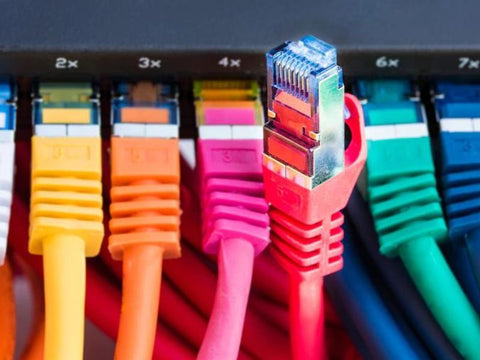Any firm must have modern networks. Network security solutions provide end users worldwide with corporate applications, multimedia messaging, and crucial data.
The network switch is a key component of networks that connects devices to share resources inside a local area network (LAN). A switch is a switch these days. Well, maybe only sometimes.
Even though all network switches transfer data from one location to another, many enterprise-grade buttons have substantial hardware and software variances that must be considered while deploying an IT infrastructure.
How Does a Network Switch Work?
A network switch can work in three ways:
1: Access switches, also referred to as edge switches:
Manage network traffic coming into and going out. Edge switches connect access points and personal computers.
2. Switches for aggregation:
These link to edge switches, sending traffic to the core switches or between switches.
3: Core switches:
Best home network switches make up the foundation of the Core switches that connect routers to organizational LANs, device or consumer edge networks to data center networks, and aggregation switches to edge networks.

Types of Switches in Networking
1: Unmanaged, smart, and managed switches
One of the most crucial purchasing decisions a network architect must make is understanding the level of management and configurability of a network switch. An unmanaged switch might be appropriate for remote branch locations or work-from-home offices.
In-home networks, small businesses, and commercial networks, unmanaged network switches are often utilized. It enables networked devices to connect, such as a printer to a local computer or a computer to another computer.
It's only sometimes necessary to configure or keep an eye on an unmanaged switch. Straightforward and simple to set up. You can use these plug-and-play switches to add more Ethernet ports in networking.
These plug-and-play switches allow multiple devices to communicate with each other across a single broadcast domain. Unmanaged switches cost a lot less because of their constrained capabilities.
2: LAN Switch
Points on an internal LAN of a business are typically connected using local area network switches or LAN switches. It is sometimes referred to as an Ethernet switch or a data switch.
Sparingly allocating bandwidth prevents data packets traveling over a network from overlapping. Before sending the transmitted data packet to its intended recipient, the LAN switch distributes it. By distributing a package of data only to the intended recipient, these switches lessen network congestion or bottlenecks.
3: Managed Switch
Managed switches have the advantage of unmanaged switches in that they can be tailored to improve a particular network's operation. QoS (Quality of Service), SNMP (Simple Network Management Protocol), and other features are available.
These switches can handle a variety of sophisticated features that are intended to be managed by a qualified administrator. A smart switch and a managed switch are also available.
Although they are more constrained, it has several functionalities that managed switches have. Typically, networking devices like VLANs are employed with the smart network switch.
4: Modular switches vs. fixed-configuration switches
Modular and fixed-configuration switches are the two main types of switches. Although there are differences between these types of network switches, their fundamental characteristics are all the same. As network requirements evolve, modular switches allow you to install expansion modules as needed.
Expansion modules can be used for firewalls, wireless connectivity, or network security solutions, and they are all application-specific. Additionally, they might support more cooling fans, power supplies, or interfaces.
You have the most flexibility with this switch, but it costs more. In general, fixed-configuration buttons are less expensive since they offer a fixed number of ports and are often not extensible. Unmanaged, smart, and managed switches all fall under fixed-configuration controls.
5: Smart switches
Modular switches can be more expensive than smart switches because they need more administration and segmentation, quality of service, and security capabilities. They still need to be more scalable as managed switches.
These switches are typically used as the infrastructure for smaller networks or networks with low complexity at the edge of large networks (managed switches are used in the core).
6: Network hubs and switches
The term Local Area Network, often known as a LAN, has a central connection point for devices called a network hub. However, on a hub-based web, the total amount of bandwidth users can share is constrained.
Data travels more slowly when more devices are connected to the network hub. Network POE switch, avoid these and other restrictions on network hubs.

Several switches that link together various computer system groups can be found in a large network. The router to which these switches are typically attached gives connected devices access to the Internet.
How Can You Set A Network Switch With A Router?
You should enhance the ports that can plug into your router to set up a network switch. Your network switch gets connected to the router with only one of the ports. And extending the number of devices in your small office networks includes printers, laptops, computers, etc., directly wired to the Internet.
Which Network Switch Is Right for You?
A home network switch is one of the basic networking devices commonly used in various network setups. If you plan to set up a local network with the safety and reliability of a cabled connection, finding the right network switch is something you should consider.
Your first consideration is often how many ports you need. You might only need a few right now, but what if you need more shortly? Always buy a switch with more ports than you need.
After deciding on the port number, consider how fast each port switch has to be. A button full of gigabit Ethernet ports may be appealing but also pricey.
Consider buying a switch with a single or a couple of gigabit uplink ports if you need faster bandwidth. A button with only a few fast Ethernet ports is usually fine with home setups.
Conclusion
The best network switches are unmanaged switches, managed switches, PoE switches, and stackable switches are the five types of buttons covered in this article.
They are utilized in various network deployments, and each has unique properties. After reading the article, we hope you will understand them better.

